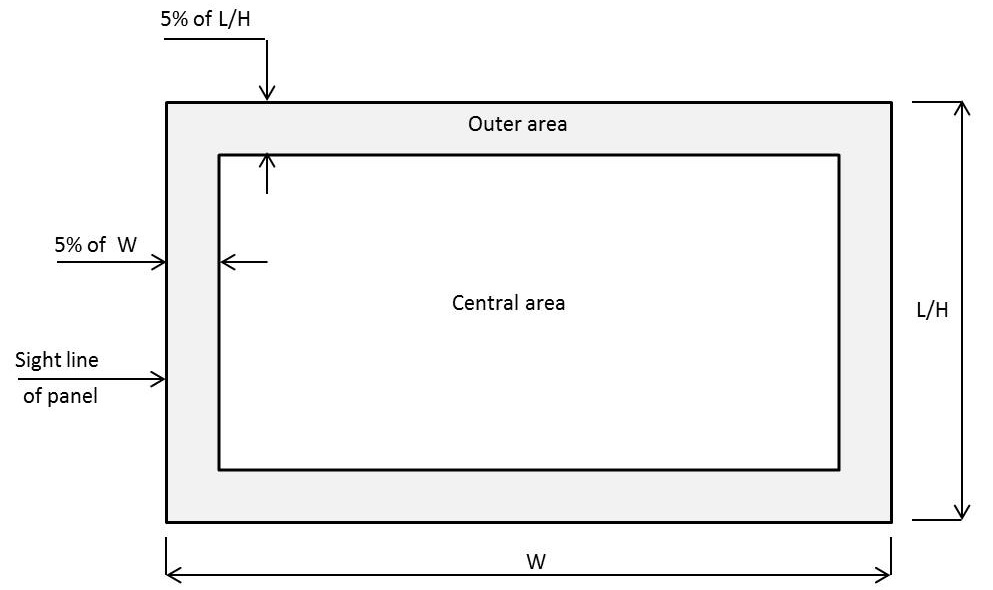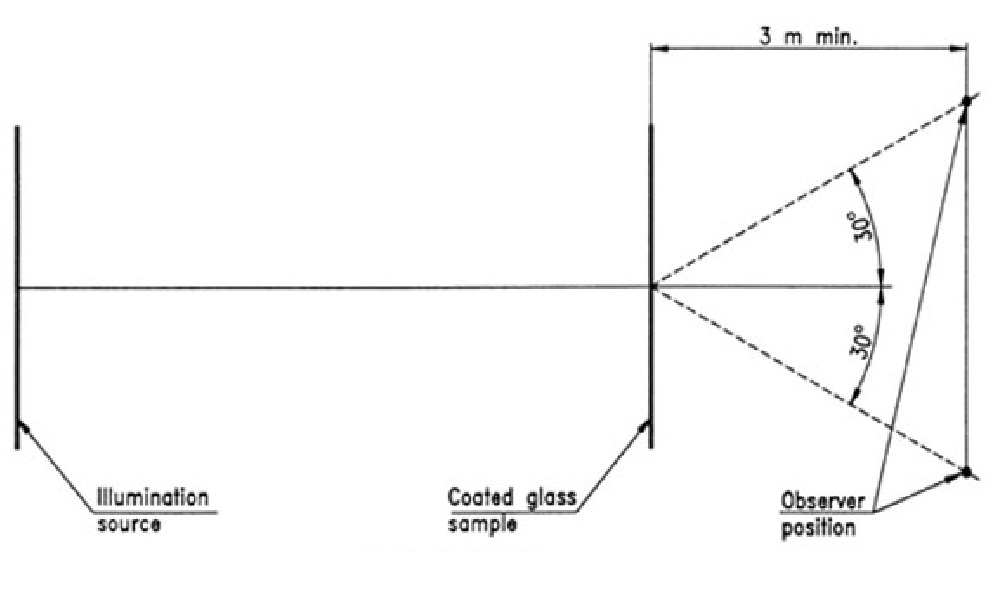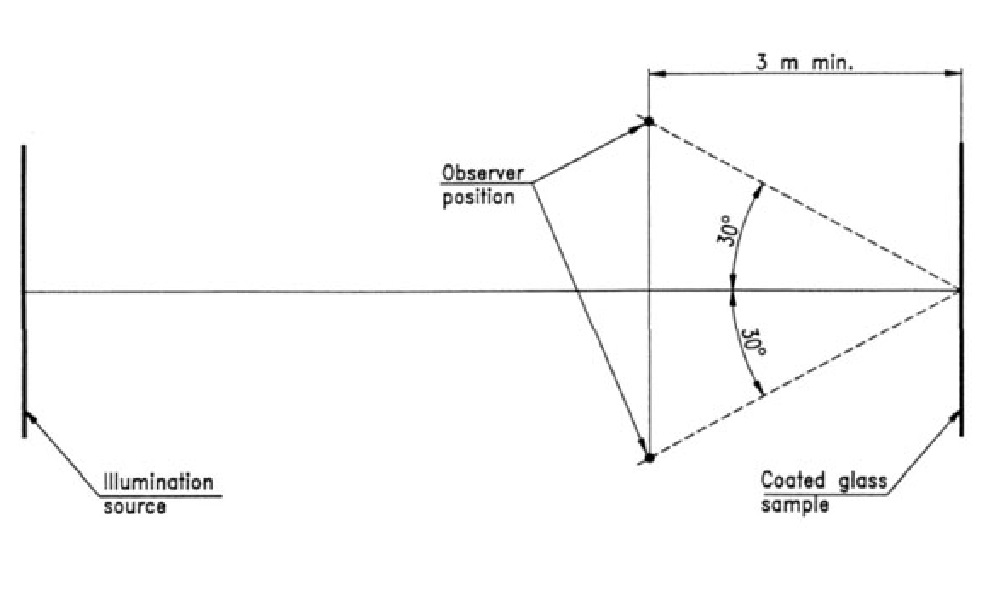Glass Panel Inspection Guide
This document aims to establish clear expectations regarding glass defects in accordance with International standards. In the luxury market, where expectations are elevated, this document serves to inform all parties about acceptable tolerances for glass defects.
When Is a Defect Not Considered a Defect?
According to EN standards, a defect is not considered a defect if it is not visible to the naked eye under the following viewing conditions:
- Viewing Angle: If the glass is viewed at a 90-degree angle in daylight (but not in direct sunlight).
- Distance: The inspection is performed from a distance of 3 meters (approximately 10 feet).
- Inspection Area: The focus is on the central 80% of the glass panel.
- Visibility: If defects are not visible to the naked eye during this inspection, the glass can be deemed free of defects.

Central Area and Outer Area Defination:
For glass panes in cut sizes, the central area shall be deemed to be the square or rectangle whose dimensions are 90 percent of the corresponding dimensions of the pane, and shares a common centre with the pane. The remaining area shall be deemed to be the outer area (see Fig). For glass panes in stock and jumbo sizes (more than 6 SQM), the outer area shall be deemed to be a 10 cm border surrounding the entire pane. The central area shall be deemed to be the remaining area of the pane.


If the defect is visible under the above-mentioned conditions, then refer to the Defect Types and Acceptance Criteria.
| Sl. No. | Defect Types | Central Area | Edge Area |
|---|---|---|---|
| i | Uniformity/Stain (Color Variation) | Allowed as long as not visually disturbing and ΔE shall be ≤ 4.5 | Allowed as long as not visually disturbing and ΔE shall be ≤ 4.5 |
| ii | Spots and Pinholes |
> 3.0 mm: Not allowed. > 2.0 mm and ≤ 3.0 mm: Not more than 1/m². ≤ 2.0 mm: Allowed. |
> 3.0 mm: Not allowed. > 2.0 mm and ≤ 3.0 mm: Not more than 1/m². ≤ 2.0 mm: Allowed. |
| iii | Scratches | > 75 mm: Not allowed. ≤ 75 mm: Allowed. |
> 75 mm: Allowed as long as they are not visually disturbing. ≤ 75 mm: Allowed. |
| iv | Coating Rub | None | ≤ 20 mm in the largest dimension |
| v | Crazing | None | None |
| vi | Corrosion | None | None |
| vii | Stain | None | None |
TERMINOLOGY USED:
- Coating rub – Surface abrasion of appreciable width that has a partial or complete removal of the coating, producing a hazy appearance.
- Corrosion – Change in the colour or level of reflected or transmitted light over all or part of the glass surface as a result of degradation of the coating from external sources.
- Cluster – Accumulation of very small defects giving the impression of stain.
- Scratches – Variety of linear score marks, whose visibility depend on their length, depth, width, position and arrangements.
- Stain – Defect in the coating larger than punctual defect, often irregularly shaped, partially of mottled structure.
- Uniformity defect – Slight visible variation in colour, in reflection or transmission, within a coated glass pane or from pane to pane.
- Pinhole – Punctual void in the coating with partial or total absence of coating and itnormally contrasts clear relative to the coating, when viewed in transmission.


